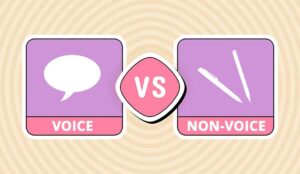Selena Castellanos of Nuance discusses the future of the contact centre voice channels.
Voice will never die. Voice connects people like nothing else; it continues to evolve and take on different shapes, but it is still one of the most powerful tools we have. With all the buzz around multichannel customer engagement, voice sits squarely in the middle of the entire interaction.
In fact, many other technologies are marrying their products with the capability of voice and seeing remarkable results. When speaking to communications service providers (CSPs) or multi-system operators (MSOs), when they discuss the topic of voice, they are typically referring to an actual voice call.
Voice messaging like voicemail may also fall into this category, but for the most part it is connecting two or more parties on a voice call.
We can all agree there has been an evolution of sorts with respect to voice calls. Some decades ago we all had landline phones and, in many cases, paid a premium for the line and actual phone device, and suffered outrageous fees for long distance.
When mobile began to take centre stage, long-distance fees were forfeited and the mobile consumer paid for voice by the minute. Eventually texting was the pretty girl at the dance and consumers paid per text. The smartphone completely changed the game, allowing carriers to charge for data and voice, but losing huge revenues to over-the-top applications like WhatsApp.
All along, the carriers have been trying to find ways to monetize their channels, replacing evaporating revenue streams with new technologies to fill the gap. Although I agree that voice has changed over the years, it is still there, is still as powerful as it ever was, and, in some cases, is growing in new and different ways.
Is Voice Alive or on Life Support?
Voice is alive but also changing. There are plenty of statistics showing the decline of the duration of voice calls and the growth of texting, but voice calls are still going strong. WhatsApp, one of the most prolific applications on the planet, leverages wireless or data networks to provide free calling and texting globally.
WhatsApp reported in May of 2018 that 65 billion messages were sent daily, equating to approximately 29 million messages per minute.
That’s straightforward, but what you might not know is that people are using this application to send recorded voice messages (voice texts or voice notes), similar to voicemail messages, directly to one another; no interface other than the app is needed.
Anne Yeh, spokeswoman for WhatsApp, wouldn’t divulge the total users of voice texts but says it’s the second most widely used feature, behind picture sharing.
Traditional voicemails are in decline, but again we see technology using voice to transform the landscape, and voicemail-to-text has been a strong, growing feature since introduced by Nuance in 2007.
Further evidence that voice is evolving is the rise of the virtual assistant. More people than ever are using voice to interact with their mobile phones, their vehicles and in the home, as is evidenced by the strong use of Alexa and other smart speakers.
A 2018 Nielsen report claims that 24% of US households have smart speakers, and 42% of those surveyed have two or more. With prices becoming very reasonable, experts project over 72% will have a smart speaker by the end of 2020.
Where Is Voice Evolution Going?
There is strong evidence voice will continue to grow significantly over the next several years. According to Statista, 55% of all new cars have a built-in voice recognition platform. My new vehicle knows my voice, understands my preferences and enhances my daily driving experience.
In the realm of healthcare, Nuance has done significant study into the impact of voice and has seen 80% reduction in delayed diagnosis when voice is implemented.
BCC Research projects that the predicted global market for voice recognition will be ~ $185B by the end of 2021. With Dragon TV, Nuance has seen extremely high retention numbers, upwards of 60% when voice is introduced to the television viewing experience.
No, voice will never die; it will continue to grow and take shape in different technologies. Voice is part of the human experience. It is powerful yet simple, not requiring any technical acumen. It connects us all.
Author: Robyn Coppell
Published On: 5th May 2020
Read more about - Guest Blogs, Nuance





































